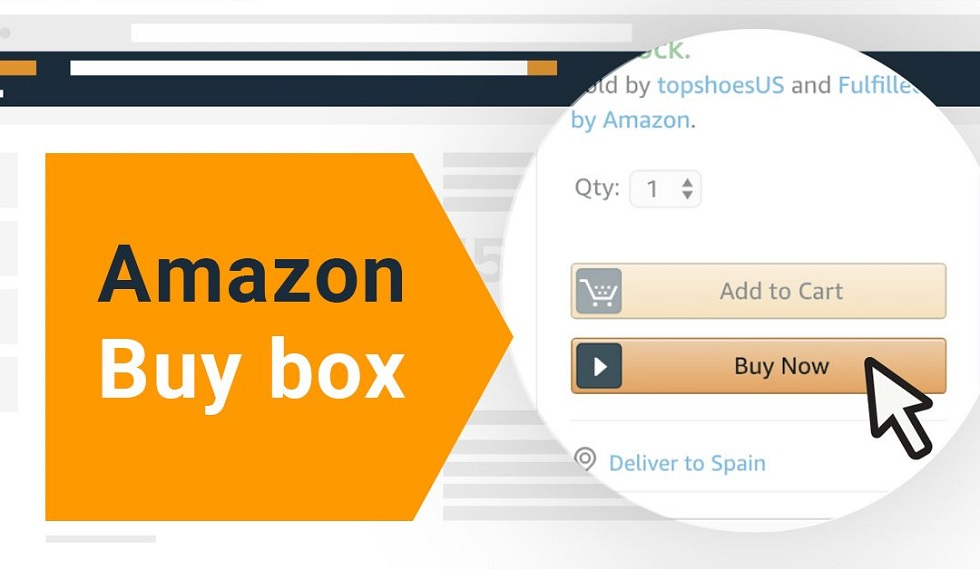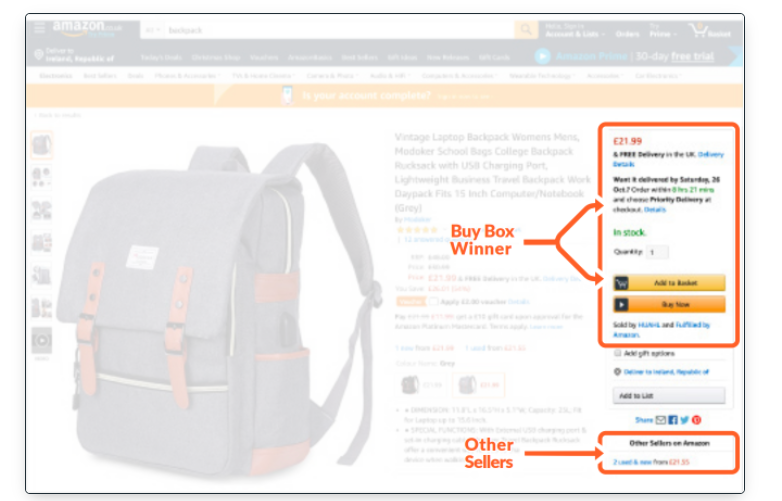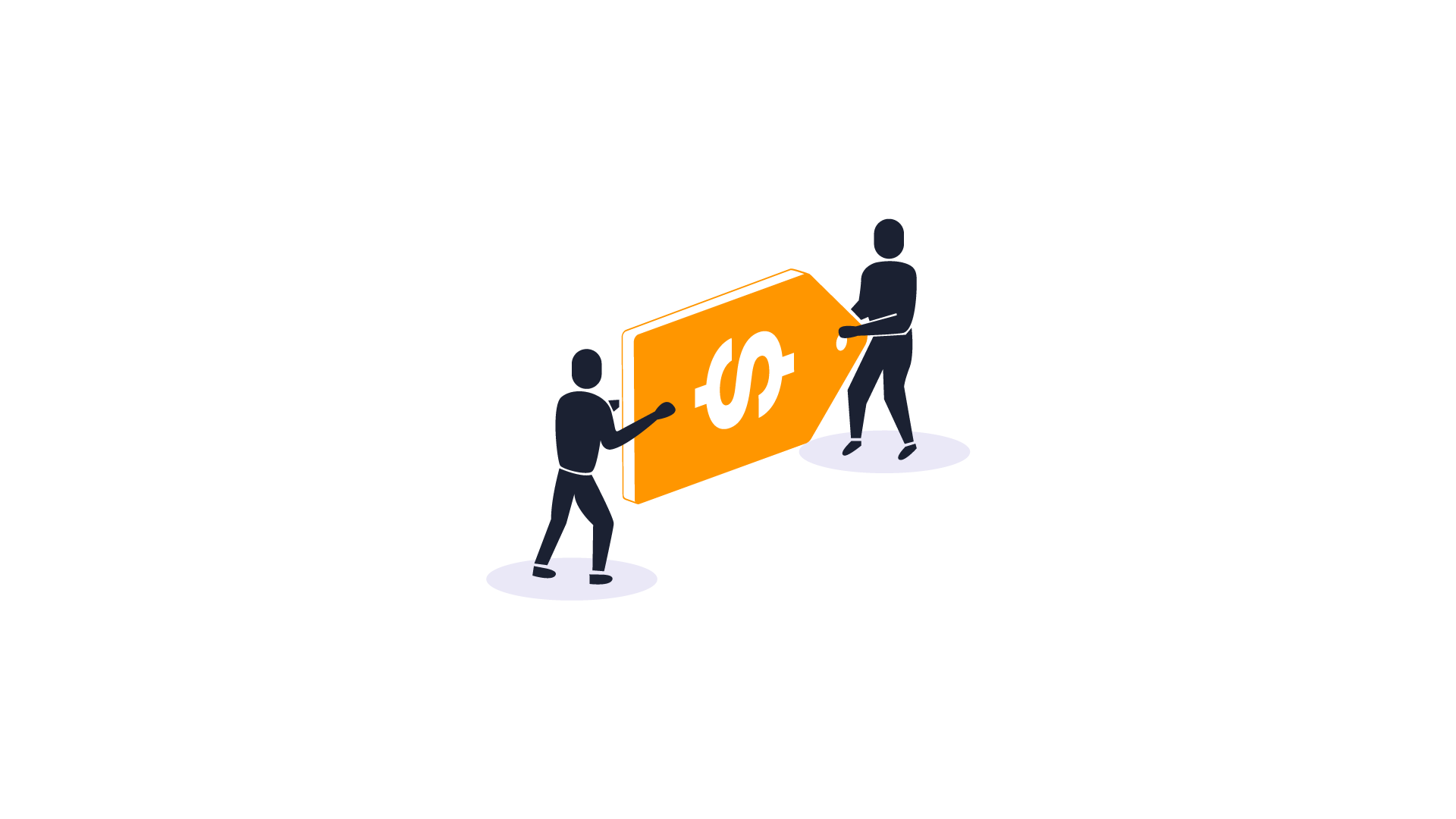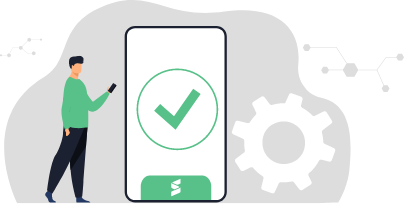Part 1 – Essential Components of an Amazon Business | What?
There is no doubt that if an e-Commerce professional finds their way to this guide, they understand the potential impact and increased market reach that Amazon can have on their business and its expansion.
Driven by Amazon’s vision to be the most customer-centric company on the planet, Amazon boasts that there are over 300 million active customers from more than 180 countries across the globe.
Serving this many customers is an enormous undertaking, which has driven the growth of a complex logistics business for Amazon, consisting of 175 strategically located fulfillment centers, massive fleets of long-haul, and last-mile delivery vehicles weaving in and out of neighborhoods with the signature Amazon arrow in the shape of a smile.
Third-Party Seller Platform
In 1999, Amazon opened its marketplace to third-party (or 3P) sellers, all of which have the same goal of reaching hundreds of millions of customers. Since then, 3P sellers’ activities have grown to account for nearly 60% of Amazon’s sales.
Amazon provides two options for selling on the platform:
- An individual seller account which has a fee of $0.99 per item
- Professional selling account with a flat fee of $39.99 per month and no per-item surcharge.
For sellers who have scaled past 40 orders a month, the professional account is the obvious choice.
Private Label Vs Reseller
Third-party Amazon Sellers can generally be split into two groups: Private Label or Reseller.
What is Amazon Private Label
To put it simply, private label sellers are those Amazon sellers who are selling private label products on the Amazon marketplace. These third-party merchants purchase generic items from manufacturers or suppliers and then sell them under their own brand.
What Is an Amazon Reseller
Another type of seller present on the Amazon marketplace is the so-called Amazon resellers. These sellers source products for a low price and then resell them at a higher price on the Amazon market. Oftentimes, resellers purchase their inventory items wholesale or at least in bulk to get a discount from suppliers or wholesalers.
Each type of seller has its merits. Resellers typically sell branded goods that already have a following. In many cases, brand loyalty results in returning customers for these existing brands resulting in a higher sales rank. A downside for resellers is the likelihood of other 3P sellers selling the same item.
Amazon sales rank pertains to how well a product is selling with respect to other products in a particular Amazon category. A sales rank serves as an estimate of the demand for a product. The lower the sales rank, means the better its sales performance on Amazon.
A Private Label on the other hand will have no (legitimate) competition on a listing, but the sales rank will need to be built from the ground up. Private label sellers will require additional investment in marketing tools and activities extending the time from launch to a positive return on investment.
What is the Amazon Buy Box?
When a customer lands on the product detail page, Amazon’s algorithm will choose a Seller to appear in the Buy Box.
The Amazon Buy Box refers to the portion of the product detail page where the “Add to Cart” or “Buy Now” buttons are located. The Buy Box is a key feature of Amazon that provides customers with the best possible shopping experience by recommending listings of sellers that satisfy the performance-based requirements to be featured on the Buy Box. It is estimated that 80% to 90% of Amazon sales go through the Buy Box, which is why numerous sellers compete to be featured on the Buy Box.
The Buy Box algorithm is directly tied to Amazon’s customer-centric mission: to offer customers the most competitive product price on the Amazon marketplace. Although Amazon’s Buy Box algorithm is a tightly guarded secret, we do know that the lowest selling price doesn’t necessarily guarantee winning the Buy Box. The best example is a Fulfilled By Amazon or FBA seller, who will generally be able to win the Buy Box at a higher price than a competing FBM seller.
Fulfillment by Amazon (FBA) is a fulfillment method where third-party merchants will handle the fulfillment process as orders come in. Through Amazon FBA, sellers are given access to the whole Amazon logistic network. Amazon will handle the packing, shipping, customer service, and returns of ordered items.
On the other hand, Fulfillment by Merchant (FBM) refers to the method of selling on Amazon where sellers do not rely on the logistic network of Amazon. It means that third-party merchants will be responsible for storing, shipping, and handling order returns or refunds.
How to Win the Buy Box on Amazon
Knowing how to win the Buy Box on Amazon is of paramount importance if you wish to improve the sales performance of your Amazon business. The Amazon algorithm selects the Buy Box winner by evaluating several elements, including Buy Box eligibility, price, availability, delivery speed, and customer service.
To increase the chances of winning the Buy Box, Amazon suggests pricing your items competitively, offering faster shipping options, keeping your inventory updated, and providing excellent customer service.
How To Sell On Amazon Successfully
Apart from winning the Amazon Buy Box, by following the tips suggested by Amazon, third-party merchants should also take advantage of software tools to have a successful Amazon venture. Using multiple Amazon seller tools is one of the keys to success in the business.
Besides repricing software, software tools such as inventory management, keyword research, product research, and feedback tools can also help improve your Amazon sales performance. Furthermore, the stacking of such technologies can also enhance your overall business operation.
Why is a Tech-Stack important?
What Is a Tech Stack?
In order to grow and manage a large online store on Amazon, sellers need multiple software tools to help automate and optimize their operations. This combination of technologies that a company or business utilizes to build and run an application or project is called a tech stack or otherwise known as a solution stack.
Understanding the concept of tech-stack led Amazon to develop an extensive API (Application Programming Interface), opening the door for software developers and start-ups to start developing tools for inventory management, orders and shipping, repricing, buyer feedback, and many more.
With the development of Amazon API, Amazon sellers can now maximize their business with the help of multiple software tools or an Amazon tech stack.
Advantages of Multiple Software Solutions
The different tools vary greatly in their pricing and the features they offer. As the number of 3rd party solutions grows, it is becoming more and more important to select the right combination of tools to meet the needs of each business.
One capability that is becoming more common is the integration of multiple software solutions. This means that different tools are able to talk to each other automatically, saving time and reducing the need for manual tasks that were previously performed by the sellers.
From a repricing perspective, an inventory management solution can automatically update a repricing software in case of a change in the cost of a product. The repricer can then automatically adjust the selling price while maintaining a profit margin and avoiding selling at a loss.
Repricing & Price Setting
Economic View
Economics teaches us that the demand for a product adjusts in relation to the price of the good. If the price goes up, consumers buy less. If the price goes down, consumers buy more.
For private label goods, this is a logical way of thinking: if a seller was to price their item too high, buyers would ultimately choose a substitute product. However, when it comes to the competitive Buy Box, this logic does not necessarily operate in the same manner.
In fact, because the Buy Box is dynamic by nature, the price will ultimately vary without much input from other market powers, such as alternative marketplaces like Walmart.
Price Elasticity of Demand:
The above is referred to as the price elasticity of demand, and it is a basic principle of economics. A product is considered elastic if the demand is significantly affected by price changes, such as cars, and inelastic if the price has a limited effect, such as electricity.
In regards to competitive listings, items are generally inelastic, meaning that the adjustments to price do not significantly affect the demand.
Because of the above, eCommerce consumers are likely to choose Amazon as the first place to purchase, making price inelastic.
Brick & Mortar Example:
Similar to physical retail shops, such as supermarkets, Amazon creates an environment where it is easier to purchase a product from Amazon rather than shop around elsewhere.
Once a consumer is on Amazon, it is easier to purchase a product at that time, just like it is easier to do all your supermarket shopping in one place, rather than walk between many stores. Prime memberships and same-day shipping contribute to this behavior.
Part 2 – Important Amazon Repricing Concepts | Why?
Repricernomics – The Economics of Repricing
Though it may not seem to conform to regular economic principles, the competitive environment of an ASIN is dictated by basic economic concepts – or repricernomics. One such principle is that the competition of sellers looking for buyers ultimately leads to lower prices.
The idea is not only a core concept of economics but also contributes to dictating price within a competitive ASIN. Amazon uses this knowledge – in combination with the Buy Box to ensure prices are always the lowest on any reputable marketplace.
While this is good for consumers, Seller partners’ profit margins are impacted by a negative cycle of penny-dropping in search of their next sale.
Understanding the basic principles of repricernomics can help sellers to better implement pricing strategies to improve their bottom line.
You Can’t Win The Buy Box High & 100% of The Time
All sellers must agree on the following: You can’t win the Buy Box at the highest price and 100% of the time.
As we know from previous chapters, nearly 80%-90% of all sales on competitive listings go through the Buy Box, and in most cases, Amazon awards the featured offer, or Buy Box, to the lowest offer on an ASIN.
Human nature is to lower prices in order to increase Buy Box share, but that logic hurts all sellers. If a seller wants to win the Buy Box 100% of the time, the listing will also need to be the lowest offer 100% of the time. Because the competitive environment is dynamic by nature, being the lowest offer ultimately leads to price wars and penny-dropping.
The problem here is that sellers think in terms of Buy Box share, and not profit margins. However, if sellers are willing to sacrifice some Buy Box share, it is possible to increase and maintain profit margins at a higher level, but it is not possible to have both.
As they say, you can’t have your cake and eat it too, the same logic applies here.
Dynamism of marketplaces
Every price change changes the competitive environment
The concept of a dynamic marketplace ultimately means that each change in a price has a reaction from the market.
If one seller lowers the price, other sellers will also adjust in order to maintain competitiveness. Because the Buy Box is the prize, and generally speaking, only one seller can win it at a time, these types of drops can create a scenario where maximizing profits is no longer possible.
Each respective price change has an equal or greater response from the competition.
Scenarios
Here is a selection of common scenarios, or competitive landscapes, that sellers are likely to come across while selling on Amazon. Understanding these scenarios can help you improve your repricing strategy and sales.
How to Sell on Amazon Successfully: Understanding Different Competitive Scenarios
High competition
High competitive ASINs are naturally challenging because they are highly susceptible to price wars, but lack responsiveness to price increases.
Any decrease in price from the equilibrium price will lead to an aggressive price war. In contrast, any price increase will not have an effect on the marketplace.
Often, the best action in highly competitive environments is to not make any brash moves.
Low competition
Low competition ASINs differ because they are less susceptible to price wars, and rising prices can have a profound effect on price.
When strategically implemented at the right time – and the right amount – an increase in price can lead to a whole marketplace increase.
Amazon Competes
Amazon is a beast of its own.
Unlike regular seller partners, having the lowest offer isn’t always the factor that wins the Buy Box.
Not only that, but Amazon’s scale, and purchasing power, make being competitive very difficult. The way a Seller partner competes with Amazon far differs from the way they would compete with another seller partner.
Minimum Advertised Price (MAP)
Similarly to high competition listings, floor prices like MAP or manufacturer’s suggested retail price (MSRP) make raising prices challenging. It is common to see all sellers priced equally and the Buy Box distributed amongst the sellers.
While it seems illogical, it is possible to raise the price. Achieving this requires Buy Box sacrifice.
What is MSRP?
The manufacturer’s suggested retail price (MSRP) is the price that a product’s manufacturer recommends it be sold for at the point of sale.
Liquidation – Penny Dropping
Penny droppers hate profits.
This behavior seems frustrating from the outset, but it is actually a blessing in disguise. While other types of pricing strategies are difficult to track, penny droppers leave themself open to price trend tracking.
We’ll talk more about beating penny droppers later, but for now, remember that if you know how a competitor is going to respond, it’s possible to beat them.
Theoretical Concepts
Understanding the principles of Game Theory
Game theory studies interactive decision-making. It involves analysis of strategies that deal with competitive situations where the outcome of a person’s choice of action likely depends on the action of other persons.
Game Theory has been applied in various situations or undertakings, including eCommerce, where competition is prevalent among market participants. Game Theory principles are used to analyze situations where multiple companies, brands, or stores compete against one another.
In such a context, the actions of one store can influence the activity of others. For example, if one store lowers its listing price, the other stores might be forced to do the same.
Myths & Misconceptions
Amazon is one of those black holes of information, stuff goes in but nothing comes out. Amazon is pretty tight-lipped about how they work and therefore leaves a lot of room open to interpretation and conspiracy theories that most likely start on a random Facebook page.
The Buy Box algorithm is Amazon’s best-kept secret, everyone wants it but no one knows the exact formula on how to get it. Sellers know deep down that they can’t win the Buy Box 100% of the time but that doesn’t keep them from trying. Unfortunately, these attempts typically lead to price wars and penny-dropping where no one wins.
Speed of repricing
Amazon holds the same third-party standard, of sharing 30 feeds an hour to all repricers. Different repricers may break up these 30 feeds into different increments, but at the end of the day, all repricers will hit a throttle limit if they try to send more than 30 feeds in an hour.
If there’s a repricer out there claiming to be the fastest one on the market, it’s lying. It’s most likely just sending all 30 feeds in 30 minutes or less and then getting hit with the throttle limit and no more feeds go through until it resets.
Don’t fall for the “fastest repricer on the market” trick!
Win The Buy Box at The Highest Price
Winning the Buy Box is typically the main goal of an Amazon seller, but winning the Buy Box at a seller’s minimum price is definitely not ideal. It’s been mentioned already, though it is good to remember, that about 85% of all sales on competitive listings come from the Buy Box, and the majority of these offers are winning the Buy Box because they are the lowest selling price on the ASIN.
A seller’s instinct might be to lower their price in order to win more of the Buy Box, but this will only drag the price down. Sellers cannot win the Buy Box 100% of the time at a high price. Instead, there needs to be a willingness to share the Buy Box.
By making use of a cooperative strategy, a seller can secure their fair Buy Box share, avoiding price wars and maximizing profit. The use of an AI repricer will allow a seller to apply this cooperative strategy
The Importance of Algorithmic Repricing
An algorithmic repricer is important as it knows how to reprice based on the data it has already received, decided by if/then statements. These if/then statements can be set up by the user or by the system and tells the repricer how to act in certain scenarios like deactivated listings, suppressed Buy Box, and when there is a penny dropper on the listing.
An AI repricer understands the if/then statements of an algorithmic repricer but instead of simply actioning if/then statements, it looks at historical data to see how it previously reacted and decides if that was the best decision. An AI repricer understands the obstacles and takes on these new challenges and learns from the previous challenges to make better decisions for the next time the scenario comes around.
Utilizing an algorithmic repricer takes the human error out of repricing. Knowing when to jump up in price or when to hold the line is a decision that the AI decides. Choosing between an AI or Algorithmic repricers can be difficult, but a good rule of thumb is that algorithmic follows the rules and AI breaks the rules.
Part 3 – Amazon Repricing Technology That Matters | How?
Technology
What data is available from Amazon’s API
Through Amazon’s API, software solutions can collect data related to seller-specific metrics and marketplace data. These include:
- Inventory data
- Orders data
- Advertising data
- Competitor data
- Buy Box data
- Pricing of ASINs










